Charisma Audio YYZ Moving Coil Cartridge— Diamonds Are A Cart’s Best Friend
Dave McNair tests the YYZ, a new high-end MC cartridge from veteran Canadian hifi distributor Charisma Audio.
I’ve been a fan of Charisma Audio for a while now. I reviewed and purchased a Charisma Audio Signature One several years back. I consider that cart to be my first high-end cartridge. Although I previously used several other MC carts, the Signature One gave me a more neutral tonality along with more resolution than I previously had. So when Bernard Li of Charisma Audio asked if I’d like to hear his new top-of-the-line YYZ cartridge (the latest evolution up from the Signature Two), I was all in.
Charisma Audio imports and sells quite a few audiophile product brands. A separate Charisma product line includes a turntable, tonearm, and a full line of cartridges. The Charisma Audio cartridge line is more of a personal passion for Mr. Li, who oversees the design elements of a mystery manufacturer he uses to produce the carts. I’ve asked, and no, he wouldn't reveal that info to me!
We are in an especially great time for vinyl enthusiasts. It seems like there is a near-constant stream of new products being introduced at all price points. There are some crazy good MC carts available at reasonable and not-so-reasonable prices. At $8,000, the YYZ is a cost-no-object product in the lineup. You’ll have to decide if a YYZ is the thing to put your vinyl rig into Nirvana territory - given there are strong offerings by other manufacturers in this thin-air region of audiophilia. When you're in the throes of vinyl playback addiction, and you have the funds, reasonable is in the ears of the beholder.
As a side note, several years back, when I was looking to get a new cart, I found it difficult to find reviews that adequately described what I was looking for. Cartridges are transducers, just like a speaker system. Speakers all have their tonality, so I think it's important to match your cart with your speakers, but for some reason, most reviews and even word of mouth from audiophile friends didn’t give me a lot of confidence to pull the trigger on something. This resulted in me buying a few things before hitting on what works for me in my system, so I’ll do my best here to describe what the YYZ offers, which is a lot.
Charisma Audio's use of a diamond cantilever in the YYZ is a unique feature that sets it apart from others in the line. The micro fine line contact diamond stylus bonded to the cantilever further enhances its performance.
I assume the yellow Rosewood body wood was chosen for its sonic properties, which, along with a pure iron square coil and a mystery alloy for the wire, helped Mr. Li arrive at his intended sonic destination. I don’t blame Mr. Li for being a chef who doesn't like giving out his recipe.
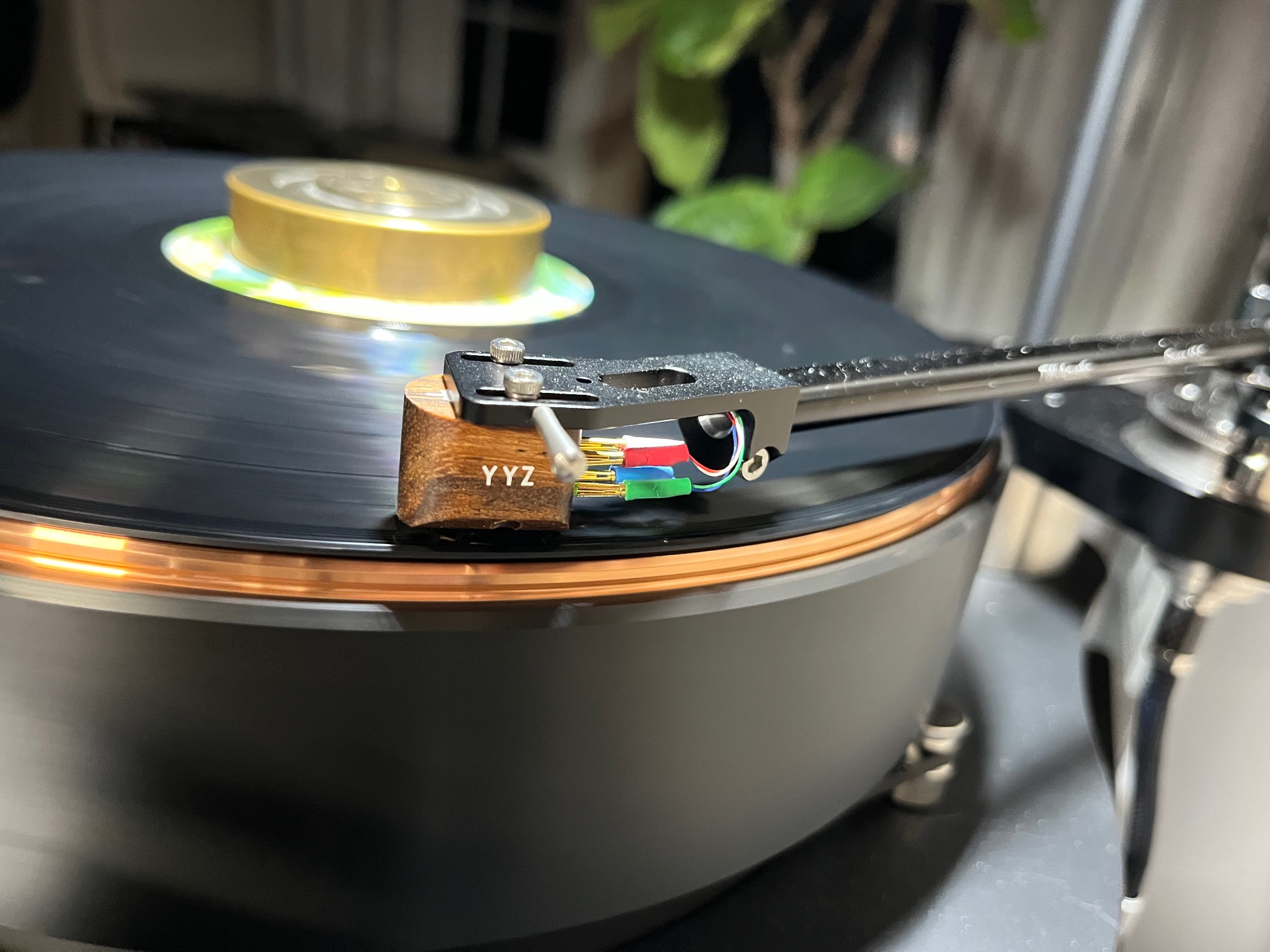
Mr Li told me a few more differences in the YYZ from his other carts:
A more refined stylus shape for better groove contact.
A different motor design results in a much lower internal impedance and lower output.
A different suspension system which allows the cart to track at a lower VTF (1.45 grams only)
Lower loading values.
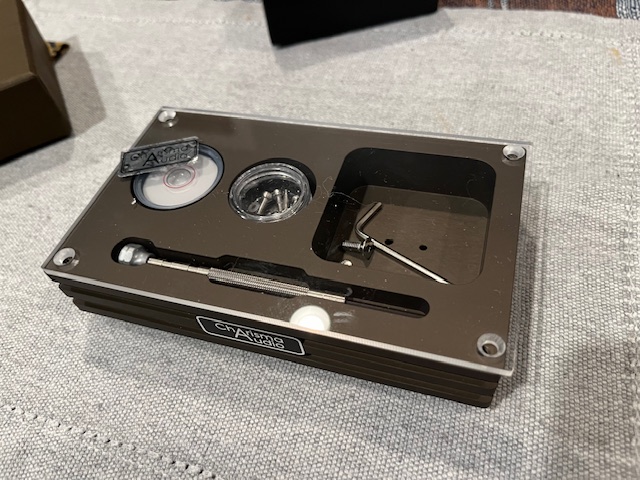
Output is specified at 0.35 mV with an internal impedance of 6 ohms. Compliance is listed at 10 um/mN, so a medium-mass tonearm is recommended. The 8-gram cart and accessory tools and screws were in a heavy, dark grey metal composite-looking box and a clear top piece showing off the innards—not too blingy but with a mission-critical vibe that is the bizness.
I recently added another TW Acustic Raven 10.5 tonearm to my Raven LS turntable, so I have the same arm for either cartridge I've got mounted. This is great because it allows me to drop both arms on a record and instantly compare my reference Dynavector XV-1t to others I have in for review. I’m currently using an Audio Research Ref 3SE phono stage that in addition to being outstanding has two remote selectable inputs, which makes it perfect for cartridge evaluation—and major bonus points for remote selectable loading. I also used my VAC Master Pre with built-in phono, a Luminous Audio Technology - Arion II phono pre, and a Westminster Labs - Monologue phono, so I had no shortage of excellent phono pres on hand to go deep with the YYZ. An Audio Research Ref 6SE line preamp and a Ref 80S power amp were also used during the review period. The system was rounded out with Acora Acoustics VRC loudspeakers and Cardas Clear Beyond cabling with a few connections using Iconoclast Gen 2 OCC.
Setup
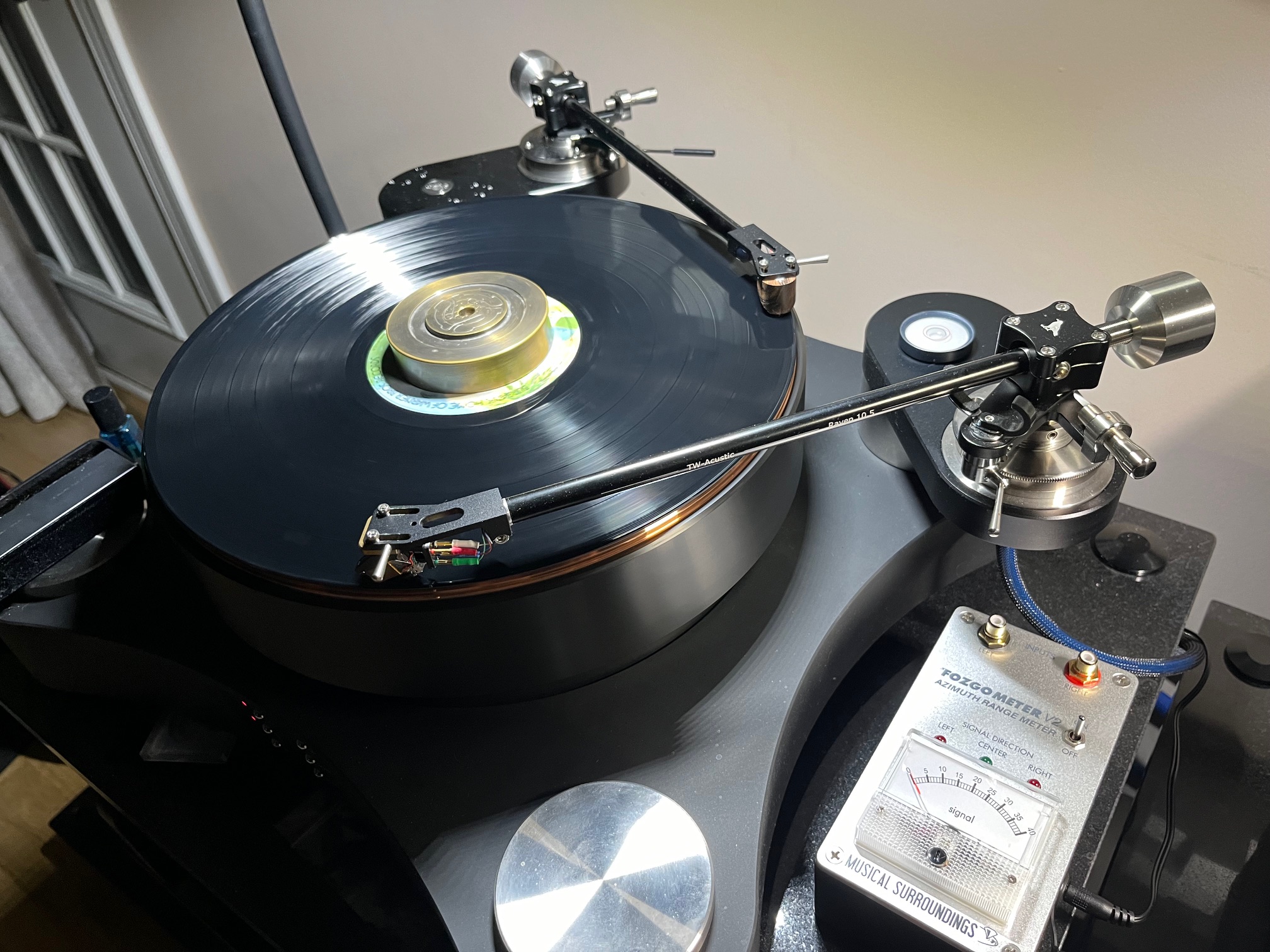
The more I change and align carts and arms, the easier it seems to get consistently great results. However, like many hardcore vinyl freaks, I’ve realized that you have to have great tools, patience, and good light.
The WallyTools suite of cartridge and arm setup tools offered by J.R. Boisclair of WAM Engineering is as good as it gets, in my opinion. I still like and use an Acoustical Systems Smart Tracker to set overhang and a Fozgometer to dial in azimuth. If I’m curious, I can get out Analog Magik and see what its numbers indicate.
With the YYZ installed and tracking force set to approximately 1.5 grams, I set up the arm to be parallel to the record surface and then set overhang and zenith angle in the usual way, finally setting tracking force to 1.45 grams. The Fozgometer indicated perfect channel balance and separation between the channels with no need to further adjust azimuth—an indication that the cartridge had been well manufactured.
WallyTools also offers a detailed cartridge analysis service (you send them your cartridge) and fabrication of a custom corrective shim to place between the cart body and head shell. With the head shell parallel to the record, installing the shim sets the correct vertical tracking angle and azimuth so there's no need for a microscope or a Fozgometer or digital oscilloscope because Boisclair's cartridge inspection does that work for you.
My Dynavector was inspected and then set up using the supplied shim. In the YYZ install I had no microscope and so had no way of knowing if the VTA or SRA was correct.
The report also tells you how far off the stylus's zenith angle is in degrees (if it is, and it usually is by a few degrees or more). Ideally a line drawn between the contact "patches" on either side of the stylus should be perpendicular to the cantilever, which is why we set the cantilever parallel to "hash marks" at the two "null" points in the first place. That's where there should be zero horizontal tracking error and the stylus should be tangential to the groove at those two null points. They would be if the zenith angle error was zero. Below is a photo (courtesy WallyTools) showing a gross zenith angle error—almost 8 degrees off!
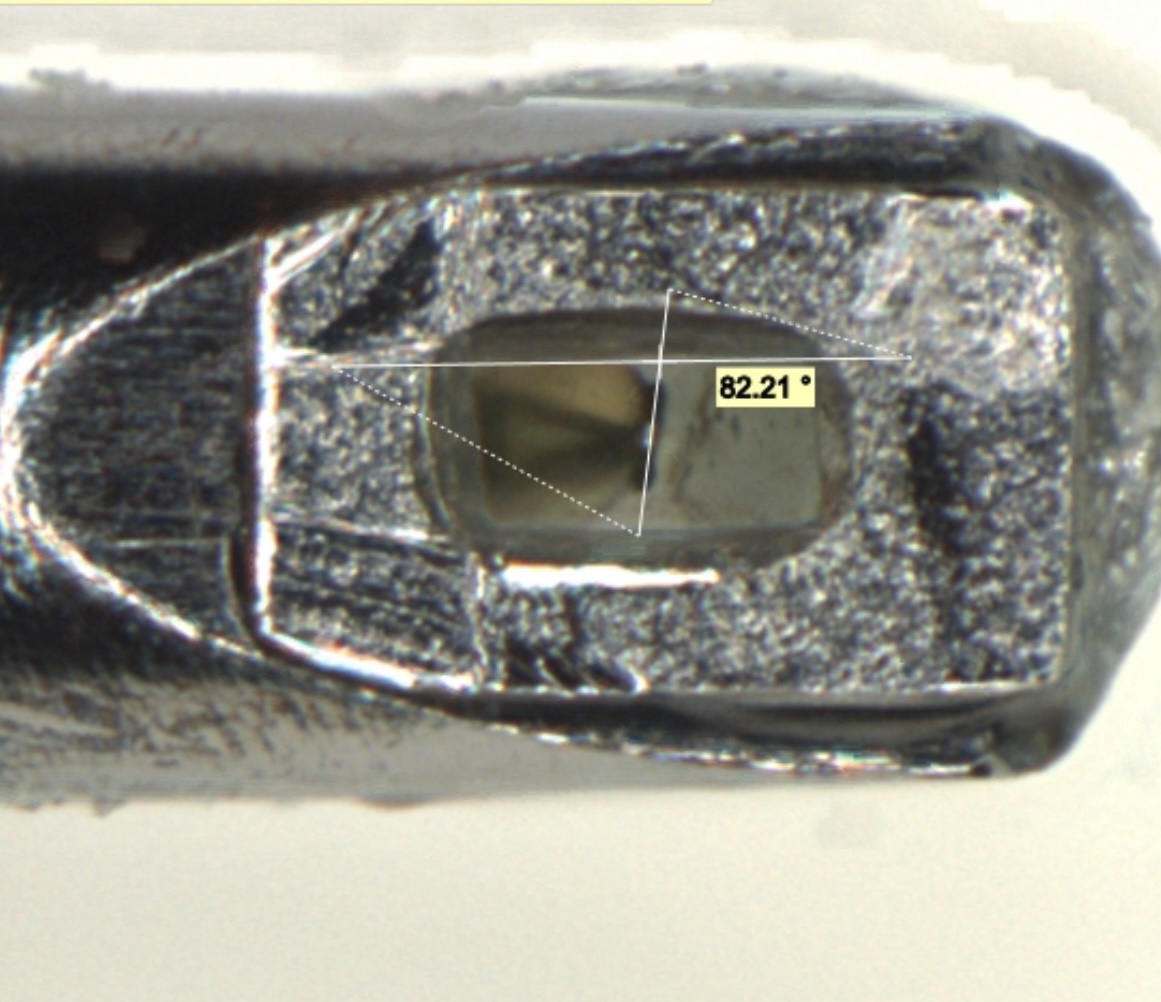 image courtesy WallyTools
image courtesy WallyTools
Boisclair offers a mirrored gauge with the cartridge report, with "hash marks" purposely deviating from perpendicularity marked in degrees. The report he sends tells you how far "off" to set zenith angle to achieve perpendicularity.
Mr. Boisclair is quick to point out that adjusting tonearm height for anything other than the head shell being parallel to the record surface introduces vector forces acting on the stylus, damper, and tonearm. He says that when enthusiasts raise or lower the arm and hear differences, what they are hearing is the result of a combination of factors and not only a VTA or SRA change. What's heard is dominated by multiple vector forces changing as the arm height changes—along with shifts in azimuth and in many arms a tracking force change.
Would I get better readings and sonics using a custom WallyTools shim like the one I have for the Dynavector? Maybe. I would use the Fozgometer readings obtained on a stock cart, along with the price of the cartridge, to determine whether to spend the money to have J.R. do a rigorous, microscope-aided corrective shim. I know it made a significant difference in my Dynavector.
In Use
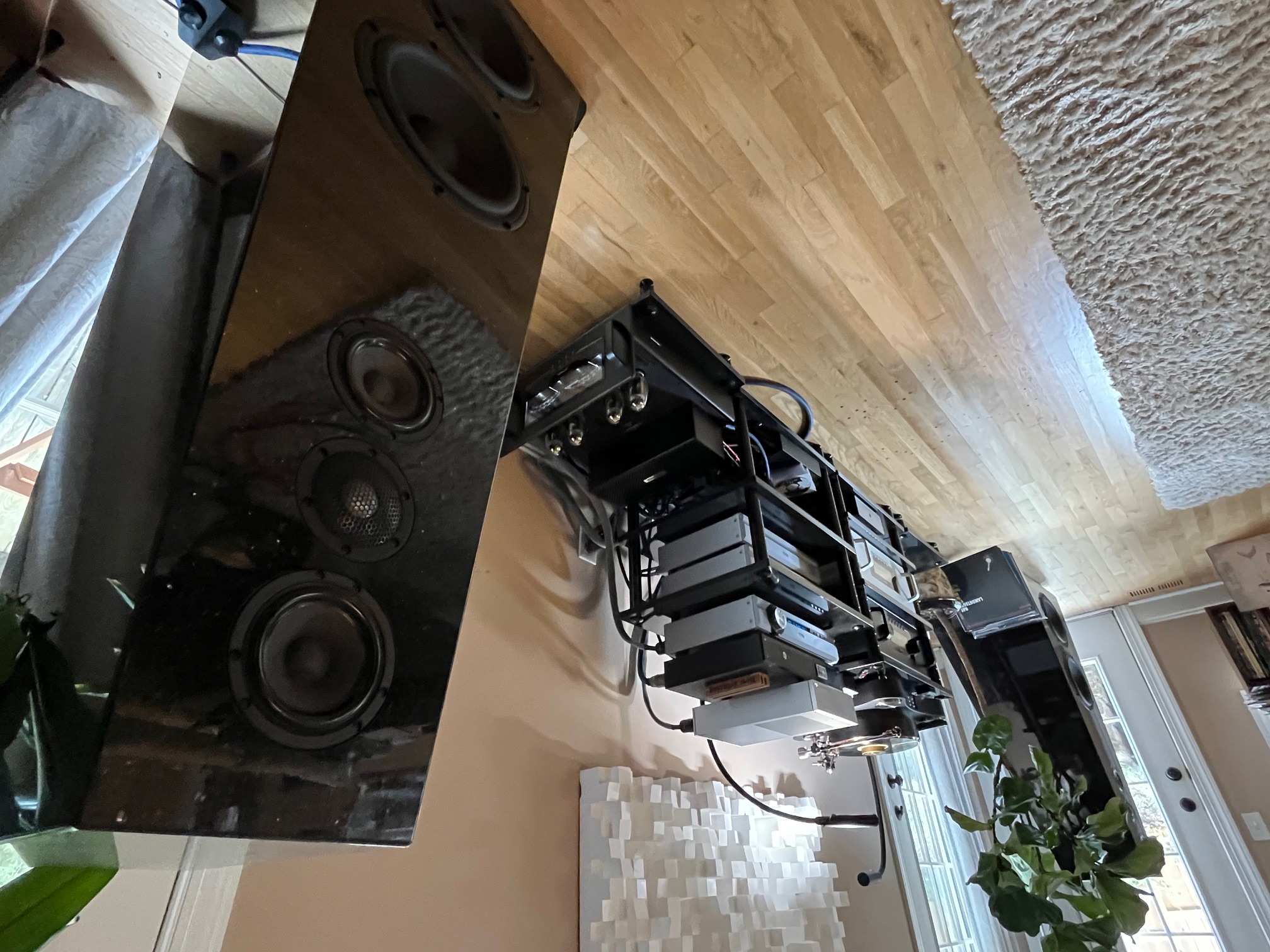
I don’t know what has been happening lately at Casa de McAudiophile. My vinyl obsession has increased, and I’m listening differently and enjoying the music on a level I didn’t know was possible.
During most of my home listening, I’m no longer locked into analytical listening mode (like at work). I’m hearing the music much more than the sound of the gear. I think that should be the aim of any music-loving audiophile. But paradoxically, getting to this place has taken many gear changes and much analytical listening.
The first time I dropped the arm with the YYZ onboard, I had a DS Audio W3 cartridge on the other arm. The Charisma was going into the Luminous Audio phono pre, and the DS went into the Westminster with the DS decoder module.
The DS is a detail and speed devil, but it also has a nice midrange tone and a fun bit of oomph around 40-50hz. The Charisma held its own admirably with a holistic flow, midrange density, and a respectable sense of detail on top. The dynamics were good but not as slammin' as the W3. It was early in the burn-in game (Charisma suggests 50 hours min), so I dutifully played my Cardas, locked groove test tones record when I wasn’t listening.
Over a few weeks, I compared the YYZ to my Dynavector. Later, when the Ref 3SE phono arrived, I could set up the 2-input phono path and zero in on loading.
The magic numbers for mois were 200 ohms loading for the YYZ and 100 ohms for the Dyna. Sometimes, I liked 100 ohms for the YYZ. The Dyna and ZZY had almost the same output, with the Dyna being just a few volume numbers louder, so it was easy to drop both arms, sit in my chair, switch phono inputs, and adjust the volume on the Ref 6SE in a near-single motion.
Fascinating (delivered in Mr. Spock voice). Hey, this dual tonearm thing is a whole new world!
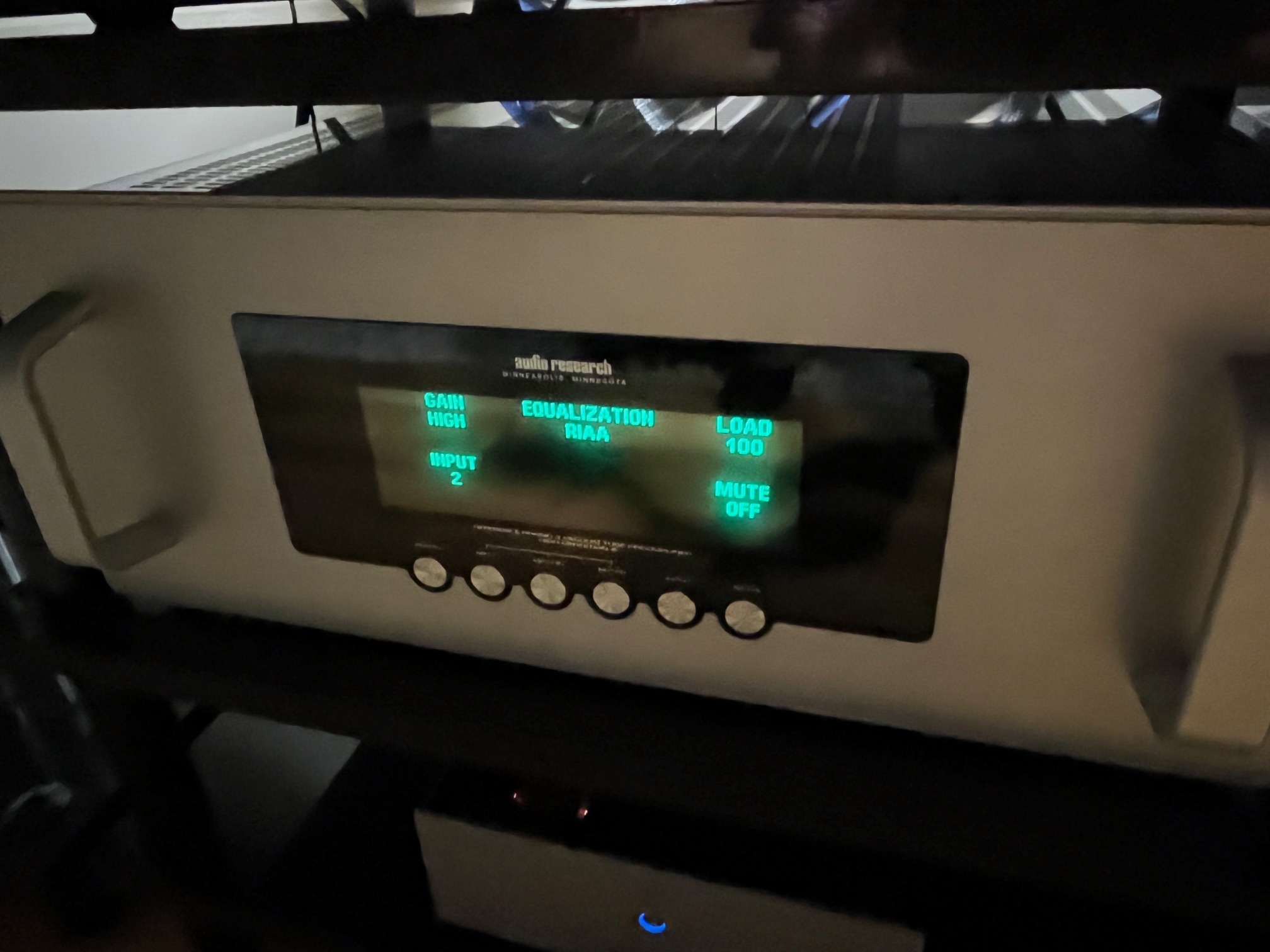
The VAC, Luminous, and Westminster (with standard MC and DS modules) were all classy, musical, and engaging; however, for me, the Ref 3SE was on a different level. Its virtually grainless, super-low distortion and silence made it easier to hear subtle and not-so-subtle differences between the XV-1t and YYZ, so that was what I used during the review period.
Days and weeks followed, with me listening almost every night, sometimes into the wee hours.
Everything that my Charisma Signature On cartridge does well was exceeded in all areas by the YYZ - in equal measure. The balancing act done by the Signature One, which was a solid 8.5 in all areas, went up to more like a 9.5 with the YYZ.
I heard a subjectively flatter frequency response throughout the midrange, seamlessly reaching into high frequencies for a beautiful sense of edgeless detail. The low end also seemed linear and focused with a good punch factor—not too loose or too lean, but perfect—just like Mom used to make.
I’ve written before I don’t like using natural to describe a component but damned if the YYZ didn’t own natural. By that, I mean that nothing of a non-musical nature ever seemed to sit on top of the sound of a recording. There were no slightly emphasized or deemphasized tonal areas or electronic-sounding haze and grain to disrupt the musical flow. I felt this was accomplished by a reduction in distortion rather than an overly forgiving high-midrange response. Yeah natural. Whatever natural means.
Imaging properties were as good as anything I’ve heard. My alignment got me an incredibly stable center image that floated in space between the Acoras. I went back and tweaked the Dynvector a bit to get a phantom center that was as impressive as the YYZ. Width, depth, and exact image placement along an imaginary half-hemisphere in front of the speakers were exceptional. Tracking was excellent.
I found the Charisma Audio YYZ to be so enjoyable as an invisible conduit to the tunes that I have no real negatives to report - as it should be for a cartridge in this price range.
Okay, everything in high-end audio could be better, so what am I not saying?
It sounds like the YYZ has been designed for a fundamental neutrality, slightly slanted toward musicality.
I felt like the XZ-1t had more slam and dynamic impact and just a bit more air at the tippy top. Imaging and basic tonality were remarkably similar. This itsy bitsy amount of air on top did not make the Dyna seem like it had more resolution or speed, just a bit more air on top. The additional dynamic impact wasn’t quite in the sense of being less dynamically constrained overall, but more like a 2% increase in attitude.
This doesn't mean that the YYZ lacked detail or speed; it has plenty, but it doesn't call attention to that. To whit:
Spin Me Another One, Just Like The Other One.
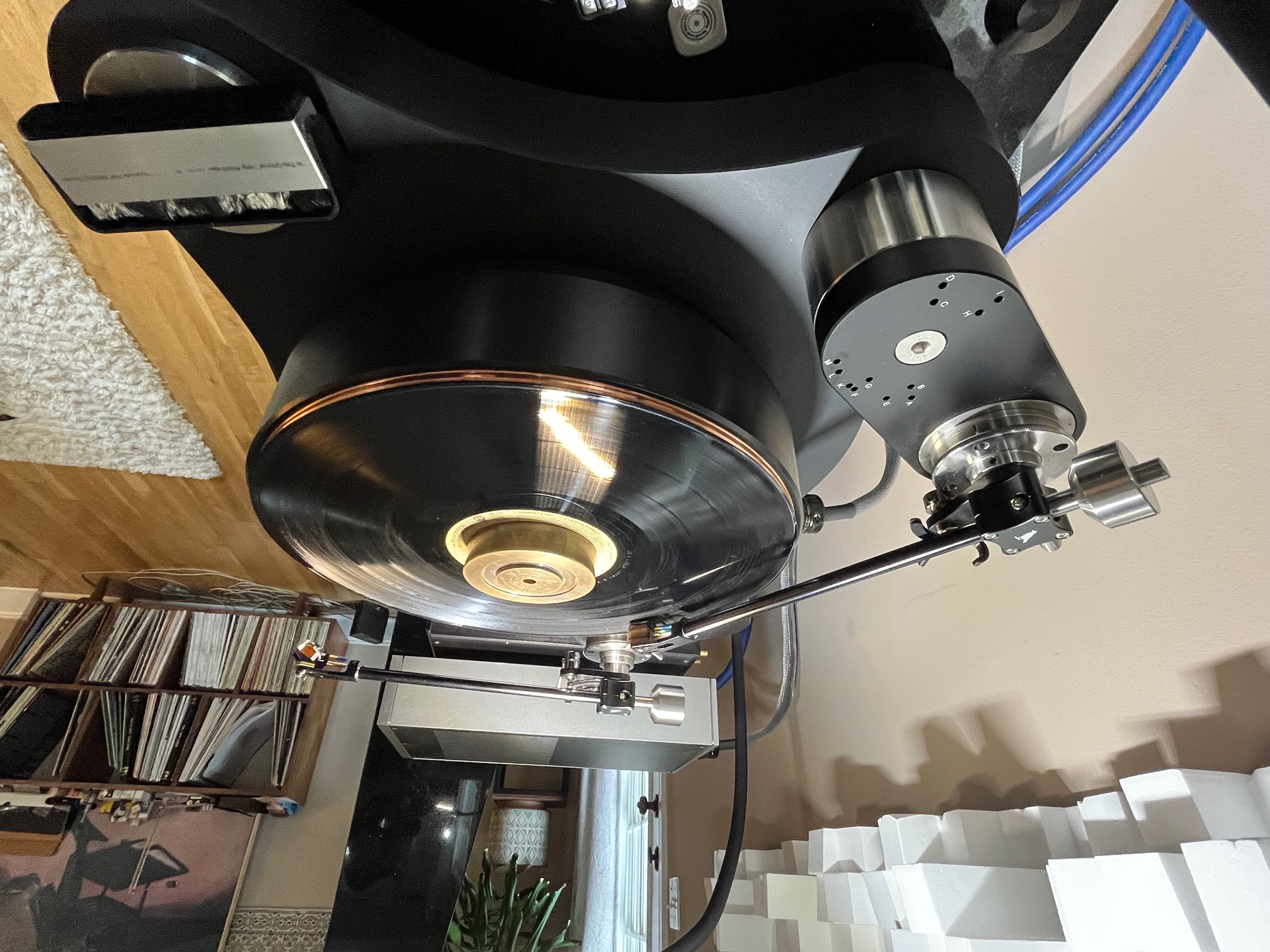
I played a lot of records. So many records. More than in any past analog review—multiple hours on most nights and many mornings. Thank you, Linda. The TW, YYZ, ARC, and Acora combo was the most seductive and enjoyable system I’ve yet had the pleasure of hearing in my vinyl pleasure palace. It seemed like each record revealed more musical and emotional content than I am used to hearing.
Laurie Anderson - Mister Heartbreak was a revelation, mainly in the creativity of the sounds and production of this classic. The YYZ delivered all the weird Adrian Belew, guitar screeches and transient-rich nature of this eclectic collection. Laurie’s vocals had a presence without any of the edgy nature I remember from the original CD. No doubt a Sony 1630 and DAE digital editor was partly to blame cause of the ‘84 release date. I wonder if the mixes were laid down to half-inch tape (most likely), and what were the lacquers cut from? Fortunately, my copy is a $3 used original pressing that is almost completely tick and pop-free.
The YYZ pulled all the body and harmonic density available out of a collection of ‘80s synth sounds and electronic drums (Simmons?) and contributed to a marked sense of flow that seemed to stitch the whole thing together and pull me into the bizarre world she and her cohorts created with this release. A few tunes have ‘80s band The Tubes drummer Prairie Prince laying down his thang. Between the drums' slam and Bill Laswell's bass, this record sometimes packs a big punch on the bottom. I got all I wanted with the YYZ.
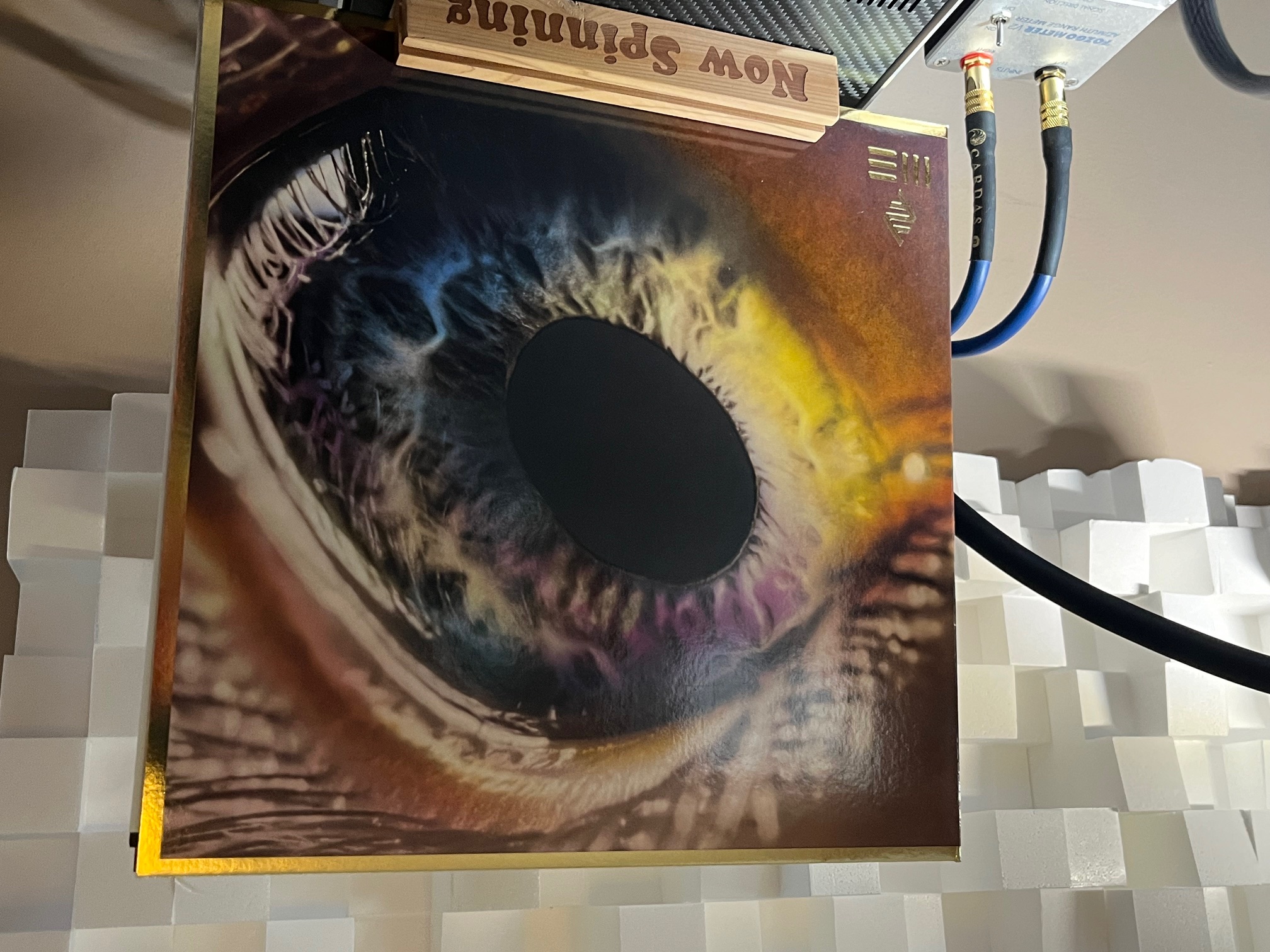
Arcade Fire - We is a record I’ve been hung up on lately, and boy, did this one satisfy. The currently available vinyl is a great cut and pressing.
I couldn’t find my way into the Arcade Fire world on past releases. Something smelled too much like the nerds in high school glee club were let loose in a recording studio. We, however, hit me very differently. Producer/mixer Nigel Godrich has a way of distilling what a band does best and leaving the self-indulgent, uncool vibes behind, which is precisely what happened here.
Sure, it’s a modern, heavily compressed affair, but I like the way Mr. Godrich does that sort of thing. Again, the YYZ loved this record and delivered every nuance of these mixes via its now familiar organic-sounding tone profile.
I think one of the more subtle aspects of vinyl vs. digital playback is a sense of chaos or lack thereof. With vinyl there is a small sense of not knowing what is gonna happen next. Digital is the opposite for me, with a strong underlying sense of certainty, even though it may not have quite the same sense of flow as analog. The more you move up in the analog playback quality level, the less sense of chaos or randomness there is. Tape has the same certainty to me that digital does. However, the tiny bit that remains in vinyl keeps me deep inside the music - along with the undefinable thing that well-designed tube gear brings into the picture. The XR-1t seems more chaotic than the YYZ, which has a calm, self-assured vibe to its groove info extraction.
One evening, I did some blind pulls from my collection, including John Abercrombie Quartet - Abercrombie Quartet. This 1980 release is an excellent example of Abercrombie's records for ECM. I’m not a serious jazz expert like some of my friends, but I love this record, and the interplay and communication between George Mraz, Peter Donald, Richard Beirach, and Abercrombie is a joy to hear. This record has that Talent Studios/Jan Erik Kongshaug/ECM sound baked in, but it’s a little more explosive and less stylized sounding than many ECM records of this period.
Hearing Abercrombi's Metheny-esk guitar sound compelled me to play a few Metheny records after this one.
Weeks into setup, burn-in, and gear swapping, I was done listening to anything other than the core musical message in any given record, but the YYZ certainly did its part to keep the flow a flowin’ on this record.
Madman Across The Water by Sir Elton John was a particularly impactful listen. I played both sides and reveled in not only the musical magic that Elton captured in the studio during this phase of his career, but I also seriously clued in on the vintage sonic presentation.
I love this sonic era, especially British releases. The Beatles showed everybody in production that rules are made to be broken in service of creativity, so lots of artists became comfortable pushing boundaries. Pop-rock recordings were rapidly becoming better-sounding.
I don’t think I had previously been as aware of all the little musical parts weaving in and out of a dynamic rhythm section, along with those Paul Buckminster strings that weren’t an addendum but integral to the songs. The backward reverb on the acoustic guitar intro of the title cut, the little treated electric guitar bits that come and go, and the little drum and cymbal flourishes were all there. I become fixated on the drum parts because of the quiet level in most verses. The drums used to sound wimpy to me, but now I locked in on the playing via a subtle and skillful placement in the mixes.
As the YYZ delivered that minuscule initial voltage to the rest of the system, I enjoyed seamlessly shifting my awareness from prominent musical parts to the more hidden ones without losing the gestalt of the music.
Closing Thoughts
I can’t know if a Charisma Audio YYZ cartridge will become your forever love. And it’s not a casual amount of coin for most of us. But at this performance level, your bank account will also groan for other worthy contenders.
For me, the overall presentation of resolution, midrange complexity, plus a tiny lean to being tonally warm, gives the YYZ everything I need to get me into my Happy Place. Zen Mind. The Zone. Call it what you will, but when your life includes a love of music and vinyl as much as mine, there is almost no price too high if I get automatic musical and emotional immersion - especially after a day of mastering listening. I decided to purchase the review sample simply as a serious option to the Dynavector; it’s that good, kids.
Specifications
Cartridge Weight: 8 g
Cartridge body: yellow rosewood
Cantilever: diamond
Stylus: micro fine line contact diamond
Vertical Tracking Angle: 20 degrees
Coil: pure iron square coil with custom made alloy wiring
Output Voltage: 0.35 mV at 3.54 cm/sec.
Internal Impedance: 6 ohms
Frequency Response: 20 – 30,000 Hz ± 1 dB
Channel Balance: better than 0.5 dB
Channel Separation: better than 30 dB
Dynamic Compliance: 10 um/mN
Recommended Loading: 100 – 330 ohms
Recommended Tracking Force: 1.4 g ± 0.1 g
Optimum Tracking Force: 1.45 g
Tracking Ability at 315 Hz / 2 g: 80 uM
Recommended Tonearm Mass: medium
Break-in Period: 50 hours
Manufacturer Information
Charisma Audio
4261 Highway 7
Unit A14
Unionville, Ontario
Canada L3R 9W6
Telephone: (905) 470-0825
Fax: (905) 470-7966
E-mail: charisma@rogers.com










































.png)








